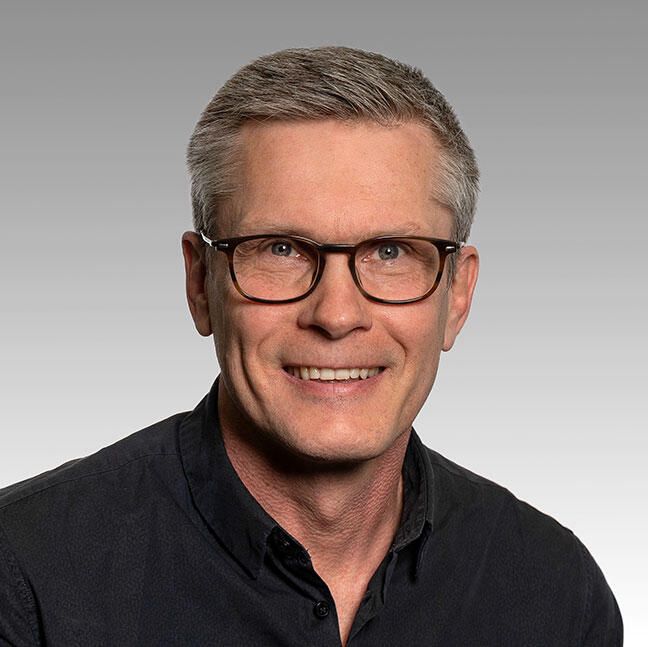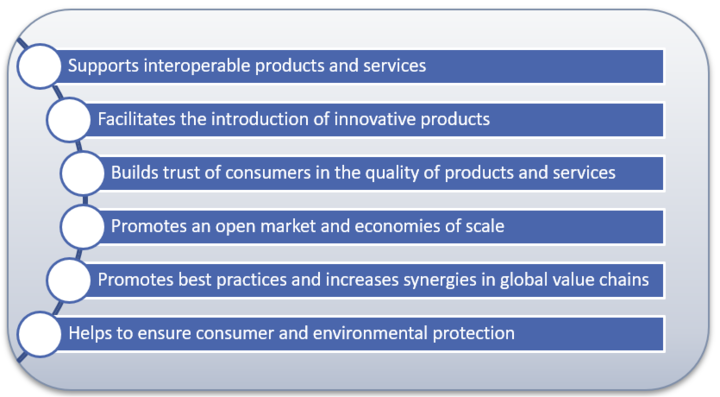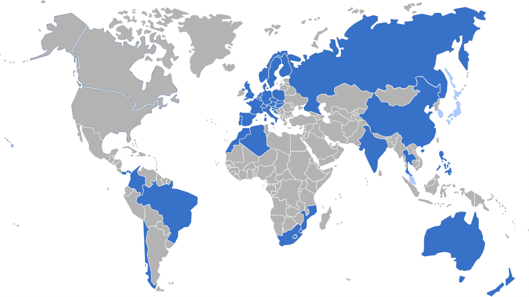Harmonized, flexible and interoperable instead of isolated solutions
Jesper Engdahl has been shaping the standardization of electronic fee collection (EFC) systems in Europe and worldwide for over two decades. As convenor of the European and global working group (WG) on EFC, he is committed to cross-border interoperability and technical harmonization. In this interview, he talks about challenges, technological developments and the strategic importance of standardization work.
Jesper Engdahl, you have been convenor of the global and European WGs on EFC since 2004. Your re-appointment as the convenor for the European WG has been confirmed for the period 2025 – 2028! What does that mean for you?
I have been convenor of the EFC WG for 21 years. My re-appointment is valuable recognition of our work and the relevance of the EFC standards. I am grateful for the trust placed in me and am motivated to take the next steps with care and passion.
And for Rapp, your employer?
A "unique selling point" for potential consulting contracts is our in-depth expertise. Our strengths lie in analysing data, in identifying trends at an early stage and in our in-depth knowledge of relevant standards, which are often explicitly referred to in invitations to tender. This combination puts us in a strong position to act as a competent partner in the shaping of standard-based solutions, whilst taking local needs into consideration.

| Jesper Engdahl (59) is a graduate electrical engineer (MScEE) and a leading expert in the field of intelligent transport systems (ITS) and EFC. He has worked at Rapp since 2001, where he has been responsible for numerous international projects as a project manager and consultant. These include assignments for the European Commission, the Swiss Federal Customs Administration, the World Bank, Austroads in Australia and various national transport ministries. He is convenor of the global and European standardization WGs for EFC in ISO and CEN and has played a leading role in the development of over 100 standardization projects. Jesper speaks five languages, is a partner at Rapp, and was the co-developer of a patent. He has also written over 20 scientific publications. He regularly participates as an expert and moderator at international specialist conferences. In addition to ITS and EFC, his areas of expertise include digital tachographs and GNSS-based positioning. |
Which standardization committees are you and your WG involved in?
The WG on EFC, one of around 1,600 WGs of the European Committee for Standardization (CEN), is anchored in the technical committee on "Intelligent Transport Systems" (CEN/TC 278). Within the committee, it elaborates and maintains the technical standards for EFC systems in Europe with the aim of promoting the interoperability and compatibility of road toll systems. The standards also back the road toll policy ("user pays and polluter pays principles") and legislation of the European Union. Eight EFC standards are cited in the EU legislation related to the European electronic toll service (EETS). Further, the implementation of the EU Eurovignette regulation is supported by EFC standards, which define electronic data and the exchange of data related to vehicle CO2 emissions.
How many countries are involved here?
Currently, 34 countries are involved, including Switzerland.
And how is the collaboration structured at the global level?
At the global level, the International Organisation for Standardization (ISO) is responsible for standardization in the field of "Intelligent Transport Systems" (ISO/TC 204), with WG 5 leading on EFC. WG 5 focuses on data exchanges and suitable technologies, such as DSRC (Dedicated Short-Range Communication). Close co-operation between ISO and CEN is essential. Around 80% of EFC standards are the result of joint efforts.
Why is this standardization work so important?
EFC offers numerous advantages, including the collection of user fees in free-flow traffic.

Advantages of EFC standards
As a user, when do I actually encounter EFC?
Let me start by explaining that EFC is an overarching term for the use of modern information and communication technologies to automatically and efficiently collect road user fees. Motorists are affected when using tolled motorways, tunnels, bridges, car parks or when paying a congestion charge, as is the case in Oslo. Tolls are applied more frequently to lorries than to lighter road vehicles, and not just on motorways.
So, is this a huge service for the many motorists and lorry drivers travelling on the roads in Europe and the world?
This makes everyday life noticeably easier for motorists and lorry drivers when paying a road user fee in free-flow traffic, as there is no need to channel traffic through lanes or stop at toll barriers.
What is the primary goal of the standardization projects?
Standardization work creates the basis for a market that is not dominated by isolated solutions, but rather one in which a wide range of providers can coexist. Our goal is to set technical standards that support interoperable, harmonized EFC systems worldwide. Modern systems work across borders so that users can pay charges in different regions or countries with one contract and one vehicle-mounted device.
The EFC standards are a success story and form the basis for the interoperability of EFC systems. They are used in more than 40 countries. More than 200 million compliant vehicle devices are in use in 150 systems worldwide.

Blue denotes countries that use EFC standards
What exactly does your work or that of the WG involve?
In a nutshell, the work of WG is to create technical rules for how devices mounted in vehicles and roadside infrastructure can talk to each other. The same applies to communication between back-office systems. This all takes place in the context of road user charging, the specification of protocols for secure data exchanges and the support of interoperability. In this regard, the WG is a unique meeting point where technical and operational aspects of EFC are discussed and harmonized at a European and international level.
What's on the agenda for the next few years?
We are currently working hard to provide three standards in support of the regulated European electronic toll service (EETS), following a formal request from the European Commission. These standards should be included in a future update of EU EETS legislation. Over the next few years, standardization work will be driven by several parallel priorities – around ten initiatives will be pursued simultaneously on an ongoing basis. We will continue to maintain existing specifications to ensure they remain fit for purpose.
Is there a main focus here?
A primary focus is on the revision of the EN 16986 profile standard, which governs the exchange of information between toll service providers (TSPs) and toll chargers (TCs). The aim is to create a robust technical basis for the interoperability of different tolling technologies and principles. Another focus is on ensuring the long-term suitability of DSRC tolling technology. At the same time, the standards supporting image-based tolling systems (e.g. ANPR) are being refined.
Are there any topics that go beyond this?
In addition, toll systems are also emerging as a potential replacement for fuel taxation on electric vehicles – particularly through the use of road usage data from connected vehicles. Other topics include integration with related areas of intelligent transport systems, such as joint payment systems and traffic management.
How do you keep track of all these different topics?
I try to bear in mind the key points and keep an eye on the priorities, and specifically delegate goals to subgroups. I believe in tackling issues proactively and in a logical order.
What is your role on this committee?
As convenor of a WG at CEN and ISO, I am responsible for managing its activities. I ensure that the planned tasks are completed on schedule and in accordance with the scope set out by the parent Technical Committee. I am responsible for the organisation and overall management of the work and for chairing the meetings. The most important tasks include striving for broadly harmonized solutions and reaching consensus. Reporting to parent bodies is another important part of the role.
Those are probably not the only tasks?
No, of course not. I inform the members about applicable rules and procedures, submit at least one interim draft to the Technical Committee, ensure the quality of the standards and assess the consensus status of the drafts before they are forwarded. If required, I take part in editing committees. The appointment as Convenor is made by the Technical Committee on the proposal of the national standardization organisations for a term of up to three years, with the possibility of renewal.
Does the job involve a lot of travelling?
Less than before. Since the Corona pandemic, our meetings have been held both online and in hybrid form. Getting participants involved and the organization of meetings are challenging, especially as the meetings rotate throughout Europe and beyond. The next meeting will take place in Tokyo, followed by another in Strasbourg. Four WG plenary sessions and around 80 online editorial meetings are held each year, with around 35 participants from 13 countries. In addition, the technical committees at the CEN and ISO levels meet twice a year, with around 25 and 100 experts respectively taking part in each meeting.
|
CEN (European Committee for Standardization) is an organisation recognised by the EU and EFTA for the development of European standards. These standards define specifications and procedures for materials, processes, products and services with the goal of promoting safety, quality and cross-border trade in the European single market. CEN consists of the national standardization institutes of 34 European countries. The standards are developed by consensus with experts from business, research, consumer and environmental organisations. CEN is also working on the international harmonization of standards through an agreement with ISO. Further information: EU communications and information protocols (EU-ICIP) guide to ITS standards |